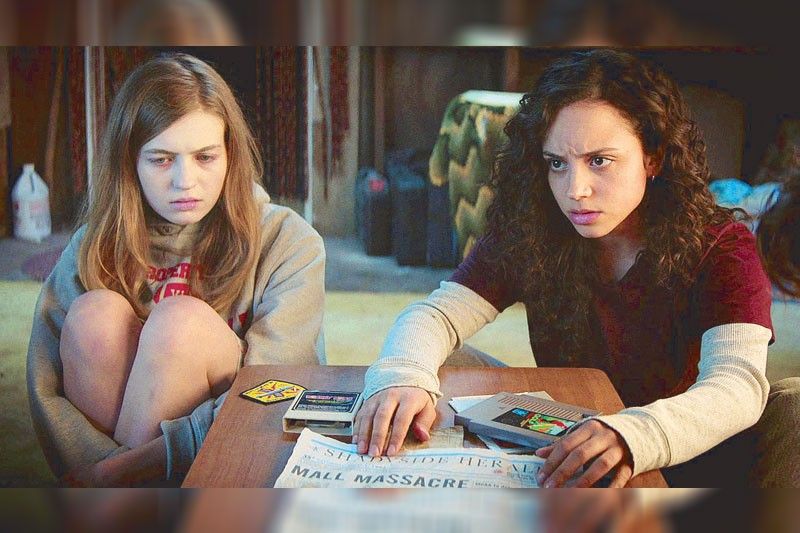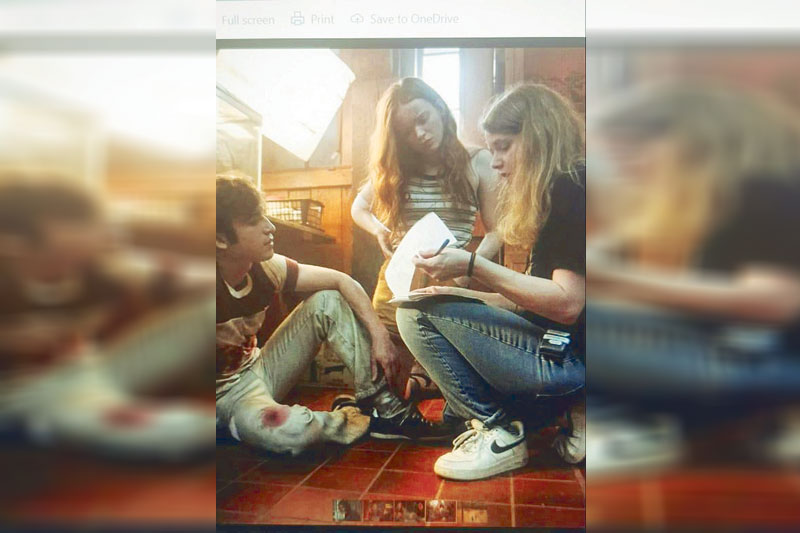R.L Stine’s Fear Street books become film trilogy

R.L. Stine’s best-selling horror book series Fear Street gets a killer film franchise on Netflix.
Directed by Leigh Janiak, Fear Street follows the “sinister history” of the town Shadyside in three installments. The trilogy of terror begins in 1994 as a group of teenagers discovers that horrifying events that have haunted their hometown for 300 years may all be connected — and they may be the next targets. Fear Street Part 1: 1994 premieres July 2; Fear Street Part 2: 1978, July 9; and Fear Street Part 3: 1666, July 16.
The young adult (YA) series was created by US author R.L. Stine in the late ‘80s to the ‘90s, featuring regular teens dealing with the paranormal. The title refers to Shadyside’s “cursed” street. Over 100 Fear Street books have since been written (including spin-offs) and 80 million copies sold all over the world.
“I grew up reading the Fear Street books. I remember being drawn to them because they felt edgy,” Leigh told The STAR and other Filipino press last Monday in a virtual interview.

So, when the 41-year-old filmmaker was approached by the producers Peter Chernin and Kori Adelson to be part of the films, it was hard to say no as these hit the sweet spot of her teenagedom.
Early on, producers saw Fear Street’s potential as a franchise. But not just any franchise as Leigh said, “Peter had this idea of, ‘I want to make a trilogy that comes out all in the same year,’ which sounded awesome. But when we started trying to figure it out, we were like, well, the thing that usually happens with a trilogy is that you have a space of a year or two years in between so that audiences are just eager to revisit the same world again.”
“So, we had to kind of look at the entire project and the idea, and say, how can we do this where we’re telling stories that feel new and also connected?” she added.
Ultimately, they decided that the films must be released in quick succession and in this case, one week apart. “We ended up finding this cool hybrid between movies and traditional television,” she said.

Going about the process of turning the books’ sprawling universe into films, Leigh described the experience as scary.
“When I first started thinking about it, it was challenging to think, where do we begin, what do we do and do we choose one specific book, how does this work?” she recalled.
“For anyone familiar with the books, the universe is so big, and it’s also not really connected. There’s this idea of Shadyside, which is great, and crazy things happen in Shadyside, crazy things happen on Fear Street, but there wasn’t really a unifying mythology across the books.”
The unified narrative makes the films different. And while the trilogy may not be a direct adaptation, it’s infused with the spirit of the books all throughout.
Said Leigh, “What we ended up doing was trying to stay true to the spirit of the books, the fun of the books, the subversive kind of edginess of the books, and then kind of try to do something a little bit new with a slasher genre, and keeping all of those things kind of up in the air and together. Hopefully, we succeeded. I feel good about it as a fan. I hope other people see that, too.”
Such direction had the blessing of R.L. Stine himself. “He was very kind, very sweet. And it was great talking to him and he’s even been very supportive, saying, “Oh, you know, my books are my books. And now, people take the books and they make them into this other thing,” said Leigh.
Meanwhile, the films served as an opportunity for Leigh to pay tribute to the iconic horror movies from the ‘70s and the ‘90s.
“The Fear Street books take place mostly in the ‘90s, so it made sense to start there but I will say what ended up being really fun for me as a filmmaker is that each part, we got to revisit the heyday of these different horror eras and pay homage to some films that came from those eras.”
She continued, “For the ‘90s, you’ve got Scream, which was peak ‘90s horror and, I think, one of the most brilliant movies ever made. Then there’s the late ‘70s, which is around the heyday of slasher films — Friday The 13th, The Texas Chainsaw Massacre and Nightmare on Elm Street.
“And with 166I (Part 3)… honestly, the biggest inspiration for that was Terence Malick’s The New World. That’s probably crazy to say — it’s not a horror movie — but for me, it was really about the horror of humanity. The Knick was actually a big inspiration for 1666, too. I felt like it was violent, bloody, disgusting and perfectly gritty, yet modern at the same time.”
Leigh didn’t originally set out to be a horror filmmaker. She’s been open to directing all sorts of films, but her debut feature in 2014, Honeymoon, won over the horror audience.
“When I started writing my indie film Honeymoon, I was like, ‘Oh, I’m writing a love story.’ That movie obviously tips into very serious body horror and then became embraced on the festival circuit by a horror audience. To me, it was just a love story gone bad, so I was a little shocked.”
Nevertheless, Leigh told The STAR she has long been fascinated with the genre.
“It’s actually weird but my brother and I loved to be scared when we were little, so we would beg our mom to hide somewhere and jump out and scare us when we weren’t expecting it, which actually made me a very jumpy adult. But it was super fun when I was a kid. So, that’s kind of like the beginning of when I got interested in the feeling of being scared.
“And then, I rented slasher movies for slumber parties in the late ‘80s when I was a kid still. As I grew up, I continued my love of watching those movies, reading the Fear Street books, everything.”
When Leigh, who is married to Ross Duffer (one-half of the Duffer Brothers, Stranger Things showrunners), was getting attached to more horror-oriented projects, she felt the genre was a great place to do a fun popcorn movie but with a message. “I realized how much I appreciated that about the genre. You could make movies that lived in that space, but then sneak a little meaning.”
Leigh was asked what it’s like to be in a male-dominated genre (and film industry, in general). She reflected, “The kind of amazing thing about filmmaking right now and being in Hollywood is that things are changing. They’re not changing quickly enough and representation is certainly not where it needs to be, there’s a kind of very small amount of women or people of color that are able to be in the position that I’m in right now, so I feel really lucky about that.
“I also feel like I was really supported by the people around me to say, like your voice is important and it’s unique and we’re not trying to make it into something else… And I’m excited about it because growing up, I didn’t really understand that there were female directors. So, I think that the more we can change what’s happening behind the camera, the more we can tell these different stories. Also, you know, a lot of young people can say, ‘Oh I can do that, I can be in this position,’ and I think that’s really cool.”
- Latest
- Trending

































